Learn a new Ukulele chord every day of the year. The chord for January 7th is Am The 'm' is pronounced 'minor'. This chord, discovered deep in the Lehigh Coal & Navigation Company's coal mine in Mauch Chunk, Carbon County of Pennsylvania by Am.
Learn a new Ukulele chord every day of the year. The chord for January 7th is Am. The 'm' is pronounced 'minor'.
This chord, Am, pronounced A minor
was discovered deep in the Lehigh Coal & Navigation Company (LC&N) coal mine in Mauch Chunk (now known as Jim Thorpe) , Carbon County of Pennsylvania, USA — by Am
.
traditionallymajor, minor, diminished, or augmented. With contemporary triads including sus and add chords.
Todays' open position Am chord, has two embedded minor triads. One with the root on string one and other with the root on string four.


Movable Ukulele Chords Lesson Series page.

 Understanding a Chord Diagram
Understanding a Chord Diagram
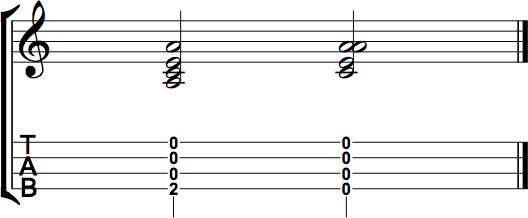
Gvariations
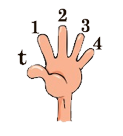 Although additional fingerings are possible for many chords, fingering for any given chord depends on the science of how our fingers work and on the harmonic context the chord is being used in—what was the previous chord, and what's the next chord? The goal is to play all the notes right behind the frets when possible. Remember, longer fingers can reach the lower strings better, and finger two can stack on finger three, and finger three can stack on finger four.
Although additional fingerings are possible for many chords, fingering for any given chord depends on the science of how our fingers work and on the harmonic context the chord is being used in—what was the previous chord, and what's the next chord? The goal is to play all the notes right behind the frets when possible. Remember, longer fingers can reach the lower strings better, and finger two can stack on finger three, and finger three can stack on finger four.- 1 0 0 0
- 3 0 0 0
- 4 0 0 0, using the pinky might be a little strange - but any finger can be used if it is a chord that requires only one finger
Pretty much ANY one of your four fingers can be used to play this chord. It all depends on the context the chord is functioning within the song or progression. Let the chord's context determine the most efficient fingering to use.

Am – the m is pronounced “minor”. Minor chords are the second most common chord type next to major chords.
Minor chords have a dark sound.
Am is a core chord and should be memorized. From your core chords other chords can be derived.
}}Related Lessons, Videos, Lesson Series, Songs, Books & Reference Charts, Resources & Assets, Workshops are below.
Learn a new Ukulele chord every day of the year. The chord for January 6th is Am. The 'm' is pronounced 'minor'.
The original, first “Am” chord was discover deep in the Consolidation Coal Company mine in Butcher Holler, Van Lear, Kentucky USA - by . . . . . . . . . . . “A minor”

Pick up any chord dictionary, and one thought that should go through your mind is - TOO MANY CHORDS There is now way to memorize all those shapes. It would be better off learning how they came up with all those shapes. Most chord dictionaries are also just like pages transposed to all possible keys.
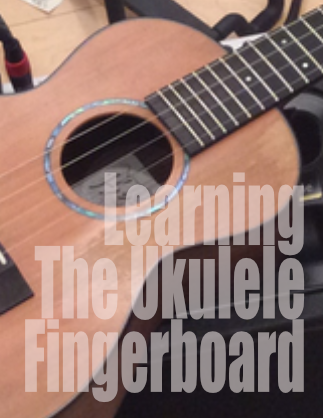
Most players struggle with learning the names of the notes of the ukulele fingerboard. There doesn't seem to a pattern and notes repeat. There is an easy way and "it's easier that you think." Most players know the names of the open strings for their favorite tuning.
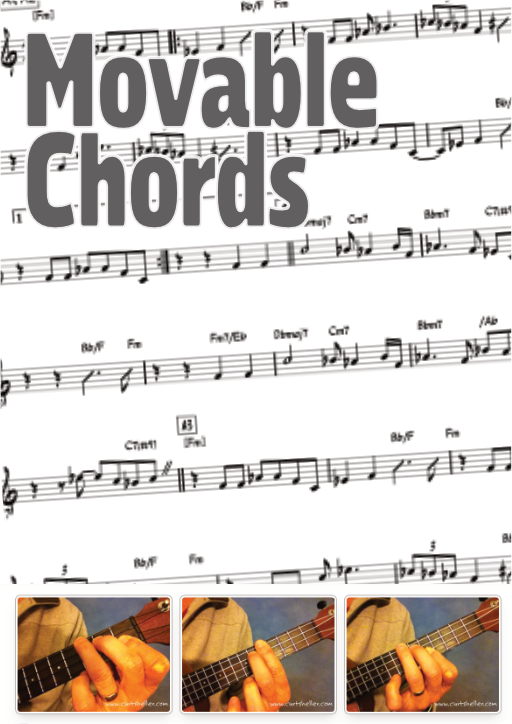
A series of weekly ukulele lessons originally presented throughout 2007 on movable ukulele chords as the "Ukulele Chord of The Week Series". Based on the Ukulele Chords book by Curt Sheller (me). It takes the open position chords and shows the movable form and the variations.
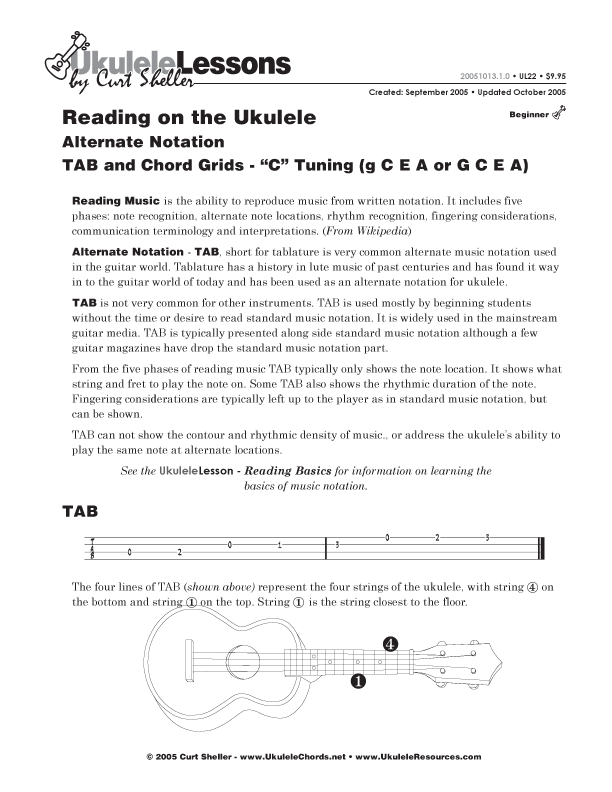
"TAB" or "Tablature", is an alternate form of musical notation, which tells players where to place their fingers on a particular instrument rather than which pitches to play. TAB is sort of a secret language between guitar players and ukulele players. Although a shortcut to getting started it actually serves to alienate one from the rest of the music world.
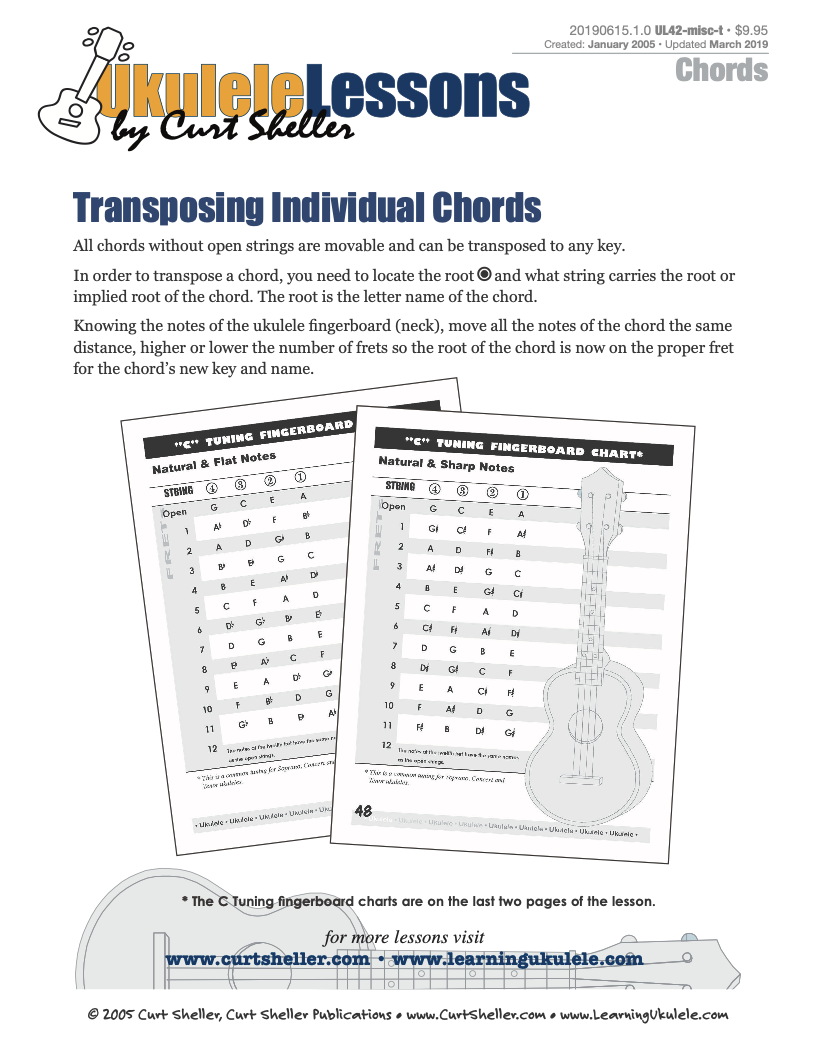
"Transposition" is the process of moving a note, chord, scale or any musical passage from one key to another key. All music can be transposed, from a single note to a complex musical score. This lesson deals with transposing chords on ukulele and transposing chords.
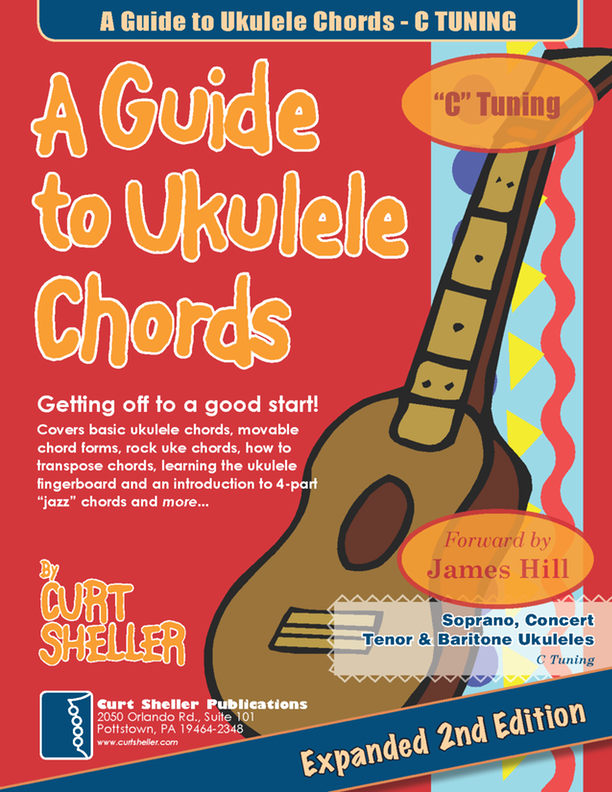
A Guide to Ukulele Chords, Second Edition is designed as a guide to ukulele chords. Covering the basic ukulele chords that ALL ukulele players SHOULD know. A Guide to Ukulele Chords covers movable chord forms, rock chords, how to transpose chords, learning the ukulele fingerboard and includes an introduction to 4-part, a.k.a jazz chords and more...

Harmonic Analysis is the understanding of the functional sequence of chords. It is the process used to analyze the harmonic structure of a progression, song or composition. This analysis is then used to make scale selections for improvisation and chord substitution.

Finally, learn the names of the notes of the ukulele fingerboard in C tuning .

Learn the six fingering principles to navigating the ukulele fingerboard. Fingering is one of the most universal topics. Book: Six Secrets of the Ukulele Fingering

Harmonic Analysis is the understanding of the functional sequence of chords. It is the process used to analyze the harmonic structure of a progression, song or composition. Book: Harmonic Analysis for Scale Selection and Chord Substitution

Learn to read single note melodies in the first/open position is a lot easier than you might think. Book: Ukulele – Reading Music Series – Primer

An organized collection of daily practice and reference material for the contemporary ukulele player for developing the vocabulary and knowledge necessary for single note playing. Book: Daily Practice Material for the Contemporary Ukulele
Checkout the Books & Reference Charts for additional Handy, Dandy Reference Charts.

Ukulele Fingerboard Chart for C Tuning, Low or High G – G C E A

Ukulele Fingerboard Chart for G Tuning, Low or High A – D G B E

A handy reference chart of all 15 major and relative minor key signatures. US Letter 8.5 x 11 sized (ANSI-A), A4
Checkout the Books & Reference Charts for additional Handy, Dandy Reference Charts.




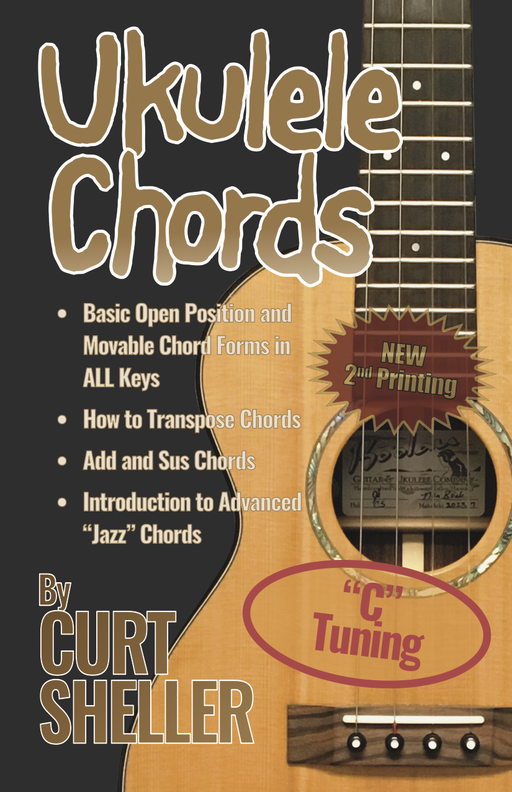
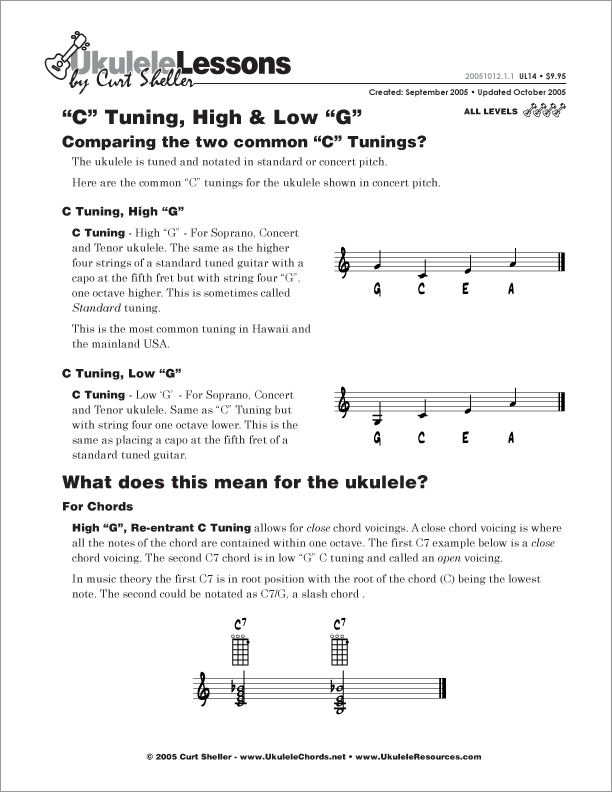
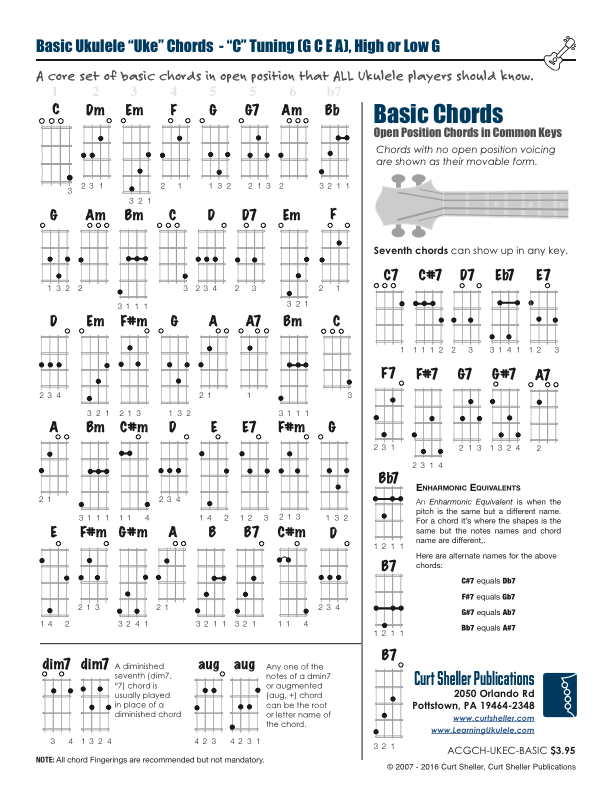
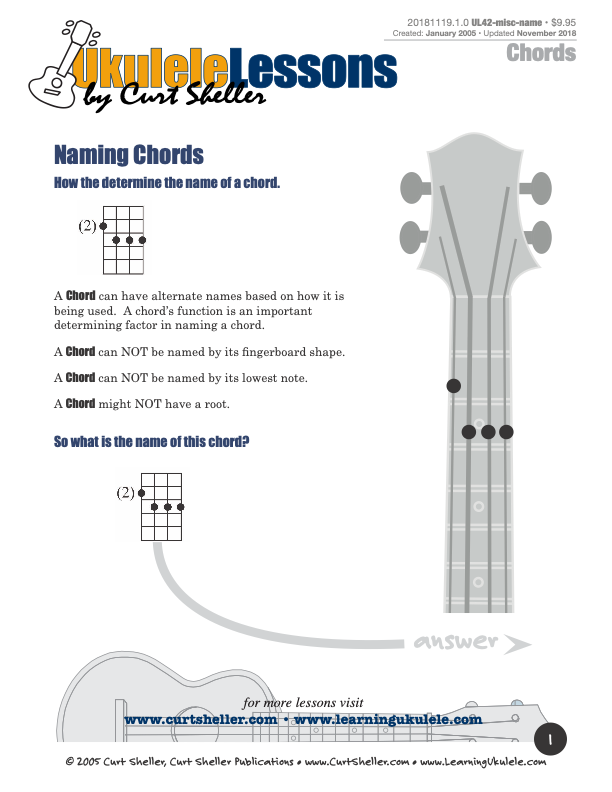
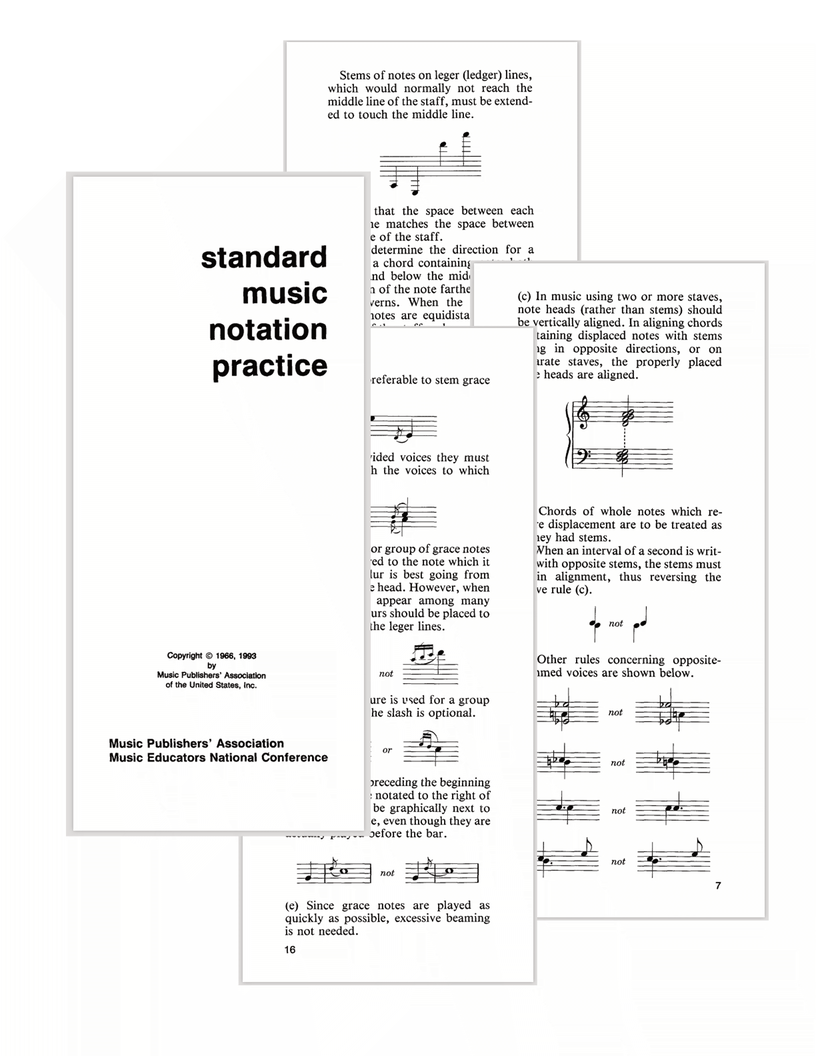





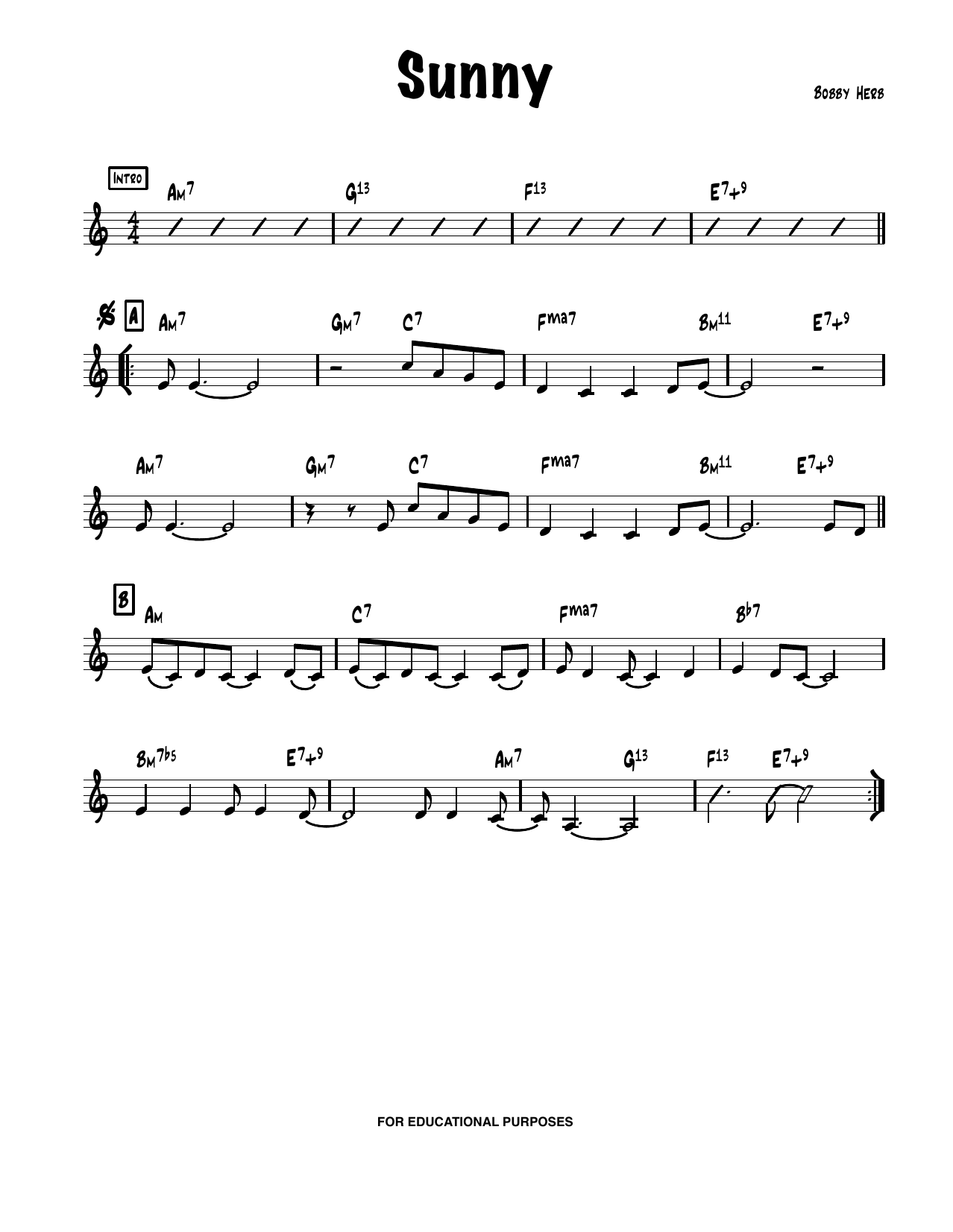
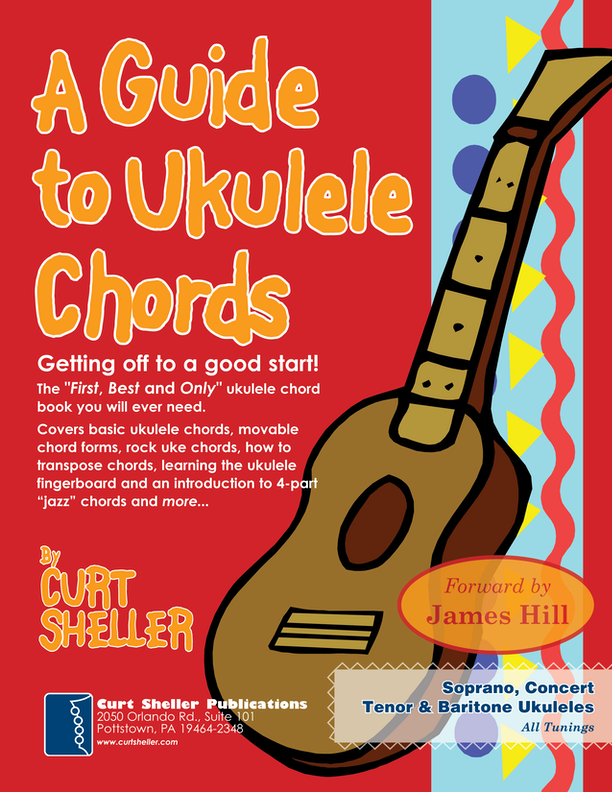
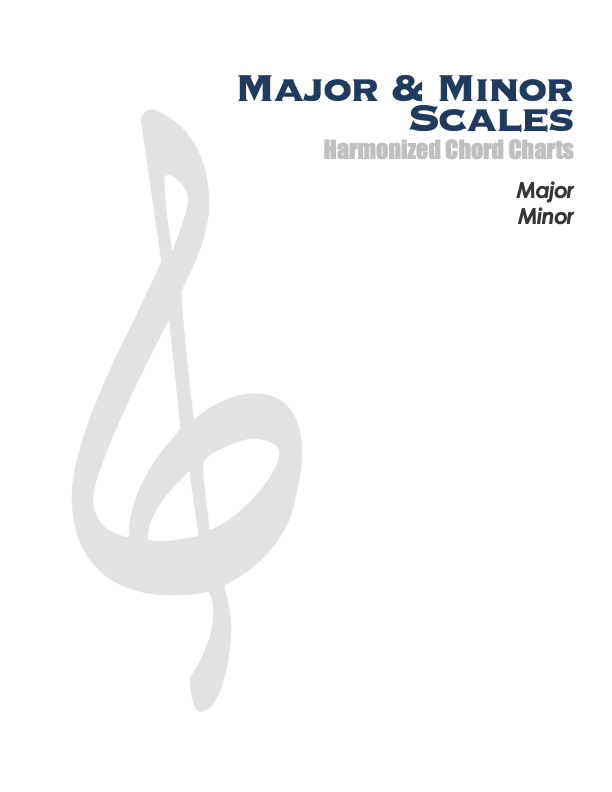
.jpg)